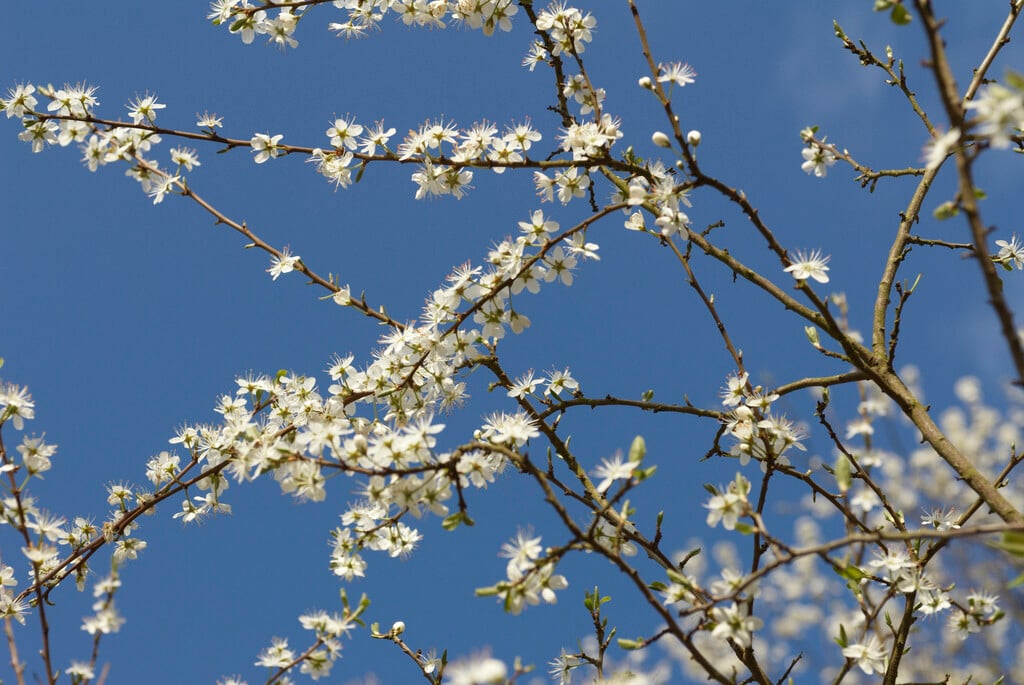Prunus spinosa
blackthorn
A small thorny deciduous tree with dark green, ovate leaves, and small white flowers in early spring, followed by ovoid, bloomy black fruits 1.5cm across. If left unchecked, it can produce suckers both upwards and outwards which may become a nuisance, so removal of these is advised unless you require a solid thicket
Size
Ultimate height
2.5–4 metresTime to ultimate height
20–50 yearsUltimate spread
2.5–4 metresGrowing conditions
Moisture
Moist but well–drainedpH
Acid, Alkaline, NeutralColour & scent
| Stem | Flower | Foliage | Fruit | |
| Spring | White | Green | ||
|---|---|---|---|---|
| Summer | Green | |||
| Autumn | Green | Black | ||
| Winter |
Position
- Full sun
Aspect
West–facing or South–facing or North–facing or East–facing
Exposure
Exposed or Sheltered Hardiness
H7Botanical details
- Family
- Rosaceae
- Native to GB / Ireland
- Yes
- Foliage
- Deciduous
- Habit
- Bushy
- Potentially harmful
- Seed kernels harmful if eaten, wear gloves and other protective equipment when handling Pets (dogs, rabbits, rodents): Harmful if eaten - for further information and contact numbers regarding pets, see the HTA guide to potentially harmful plants
- Genus
Prunus can be deciduous or evergreen trees or shrubs with showy flowers in spring, and often good autumn foliage colour. Some have edible fruit in autumn, and a few species have ornamental bark
- Name status
Correct
- Plant range
- Europe to Russia Med.
How to grow
Cultivation
Easy to grow native shrub or small tree, that can be used for hedging. Grows in any moist well-drained soil in full sun
Propagation
Propagate by softwood cuttings in early summer with bottom heat or propagate by seed
Suggested planting locations and garden types
- Coastal
- Cottage and informal garden
- Wildflower meadow
- Wildlife gardens
- Hedging and screens
Pruning
Pruning group 1. Prune in mid-summer if silver leaf is a problem
Pests
Susceptible to damage from aphids, caterpillars and bullfinches
Diseases
May be subject to silver leaf and blossom wilt. High Risk Host for Xylella fastidiosa
Love gardening
Sign up to receive regular gardening tips, inspiration, offers and more
View our Privacy Policy
Get involved
The Royal Horticultural Society is the UK’s leading gardening charity. We aim to enrich everyone’s life through plants, and make the UK a greener and more beautiful place.

